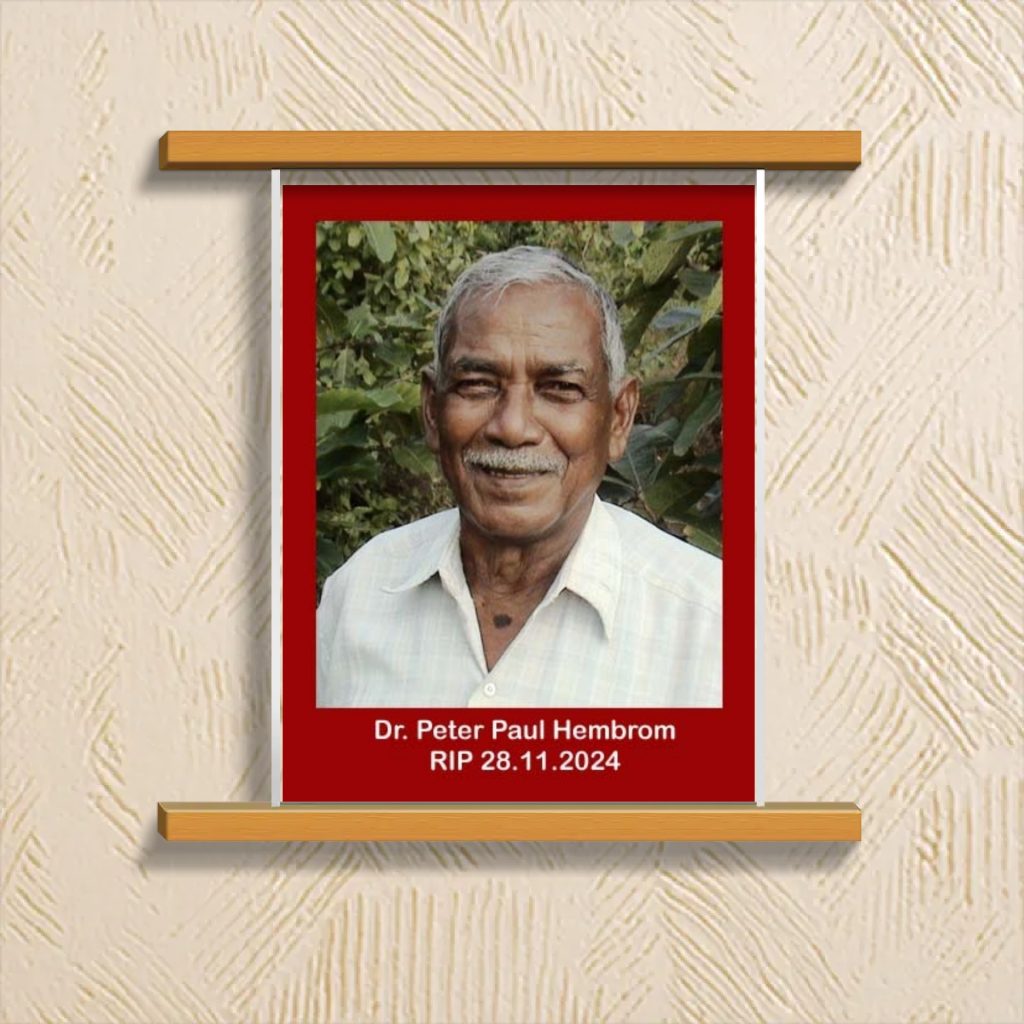P. A. Chacko S. J.

95 year old Peter Paul Hembrom decided to switch off the ignition key of his long race of life and chose to take a quiet walk into eternity. Towards the evening of his life, he had slowed down the speed due to various ailments. Even then, the ever smiling Hembrom had held on to his positive attitude to life.
Hembrom lived at Maheshmunda in Giridih district after shifting from his parental place in Torpa of Khunti district in Chotanagpur. Like a caring father he got his four sons and two daughters settled down around his own residence.
He had a pet name called Palu Munda, which he dearly loved as his pen name as he was a prolific writer. He authored many books on Jharkhand’s ethnomedicine and Jharkhandi system of Tribal medicine.
Hembrom served as Forest Officer (DFO) for some years and later shifted to the post of the Tribal Cooperative Officer in Santal Parganas. His main job was to help the Tribal community, particularly the Paharia tribe, get out of their bondage to moneylenders. His department gave out cultivation loans and recovered the loans in kind, the hill produces, for a good price. Even today the Paharias fondly remember him as Hembrom Saheb who combed their hill areas often on foot.
Hembrom was an active member of the Ethnobotanical Society of India. His speciality was the ethnomedical system of Jharkhand. He knew every plant, every tree, every creeper,and every shrub by its botanical/scientific name and names in all Indian langages and their medicinal uses.
He was a treasure house of knowledge, a walking encyclopedia and an authority on the Jharkhandi system of medicine.
He helped me to set up a herbal dispensary and herbal garden at Satia in Pakur district in 1988. With the idea of propagating and diseminating his wealth of knowlede, he helped me to start herbal training programs in that remote Paharia village. With his and his brother Lawrence Hembrom’s help, Paharia Seva Samiti at Satia had been conducting herbal medicine training programs for the last 35 years. His principle was that knowledge was not to be kept under wraps, but had to be shared for people’s enrichment. So, unlike the traditional practitioners, who never divulged the secret of their medicines, Hembrom insisted that knowledge had to be shared. There should not be any secrecy in medicinal practices.
As I sat with him, my great friend and mentor, on 27th November, in his semi-conscious state he held my hand tightly as if telling me, ‘Goodbye my friend!’ I knew he was getting ready for his eternal trip. The parish priest of Maheshmunda parish administered to him the Sacrament of the Sick and we prayed for him in the presence of his family. The next day he sat up for a last sip of soft food and breathed his last quietly.
Dr. Peter Paul Hembrom remains a towering figure for his wealth of knowldege in Tribal traditional medical system.
Sadly, the government has failed to acknowledge his contribution with a fitting national or state honour.
Whatever that be, Dr. Peter Paul Hembrom lives in the hearts of millions as a simple, ever smiling, ever helpful, knowledge disseminating generous person.
As he enters the portals of the Eternal City, may he enjoy a well deserved rest and the eternal banquet. His Lord beckons to him: Come, my faithful one!